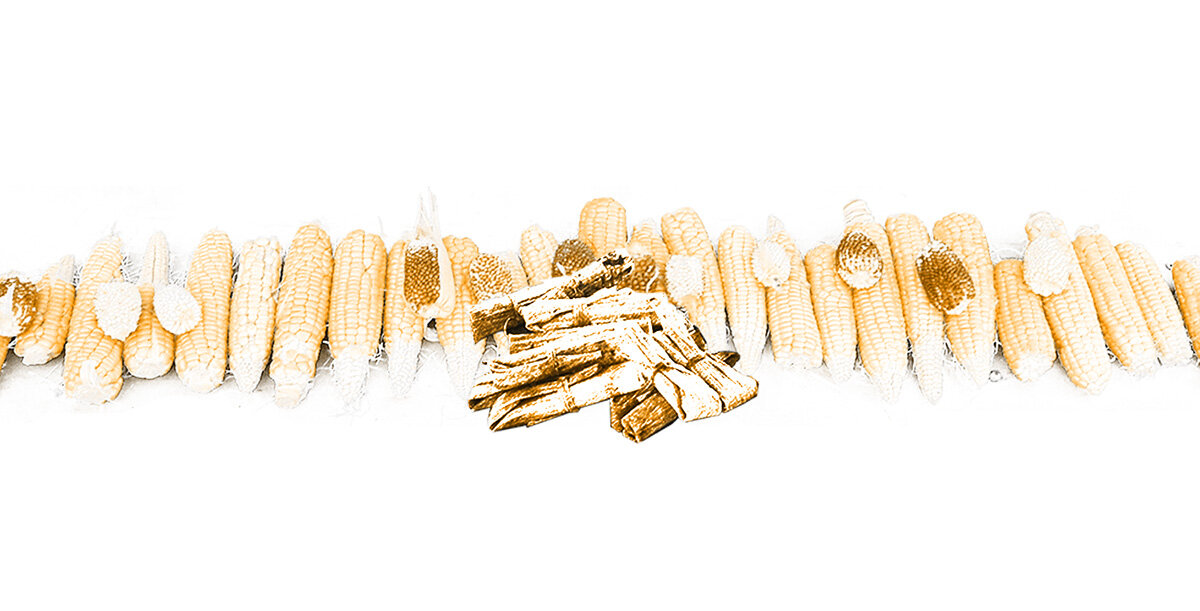
MESOAMERICAn and COLOMBIAN SANTAFEREñO TAMALES
MESOAMERICAn and COLOMBIAN SANTAFEREñO TAMALES
Tamale comes from the Nahuatl word tamalli, and originated in Mesoamerica as early as 8000 to 5000 BC. The Olmec, Toltec, Aztec and Maya all made tamales, they were sacred and a large part of rituals and festivals. Some speculate that the tamal predates the tortilla, as it is a perfect wrapper for food that can be eaten or carried to be reheated or eaten cold later. Tamales may be wrapped in corn husks, corn leaves, amaranth leaves, chaya (tree spinach), or platano leaves. The fillings vary widely by region and by holiday. There are very different histories of the origin of the tamal, particularly because European colonizers wrote very different stories about the feasts they came upon, so their accounts are not considered reliable. Sociologist Beatriz Ramírez Woolrich, who works on the Seminario de Antropología de la Alimentación with the Instituto de Investigaciones Antropológicas of the Universidad Nacional Autónoma de México (UNAM), is an expert on the history of the tamal in the region. She relates that there are more than 500 kinds of tamales in Mexico, with 3-4,000 distinct preparations.
Although in parts of present day Mexico and Guatemala, tamales are wrapped in different leaves, for these tamaladas, we will be making tamales wrapped in corn husks.
COLOMBIAN SANTAFEREñO TAMALES
Tamales are extremely popular in Colombia, German Patino has written in La Semana that there are over 500 variations of tamales made all over Colombia. These include making masa from maize or rice, mixing masa with coconut milk, wrapping them in corn husks or plantain leaves, square, rectangular or ball shapes, and include the varieties Boyacense, Caucanos, Cesarense, Cordobés, Llanero, Nariñense, Paisa, Santafereño, Santandereano, Tolimense, Vallunos, Piangua and much, much more. I grew up making and eating the Santafereño tamales from Bogota, and for the tamaladas, we make the Santafereños wrapped in plantain leaves.
TAMALES de mesoamerica, y TAMALES SANTAFEREñOS DE COLOMBIA
Los olmecas, toltecas, aztecas y mayas hacían tamales, eran sagrados y una gran parte de los rituales y festivales. Algunos especulan que el tamal es anterior a la tortilla, ya que es un envoltorio perfecto para alimentos que se pueden comer o llevar para recalentar o comer frío más tarde. Los tamales se pueden envolver en hojas de maíz, hojas de amaranto, chaya (espinaca de árbol) o hojas de plátano. Los rellenos varían mucho según la región y la temporada. Hay historias muy diferentes sobre el origen del tamal, particularmente porque los colonizadores europeos escribieron historias muy diferentes sobre las fiestas a las que se encontraron, por lo que sus relatos no se consideran confiables. La socióloga Beatriz Ramírez Woolrich, quien trabaja en el Seminario de Antropología de la Alimentación con el Instituto de Investigaciones Antropológicas de la Universidad Nacional Autónoma de México (UNAM), es una experta en la historia del tamal en la región. Ella relata que hay más de 500 tipos de tamales en México, con 3-4,000 preparaciones distintas
TAMALES SANTAFEREñOS DE COLOMBIA
Los tamales son muy populares en Colombia, German Patino ha escrito en La Semana que hay más de 500 variaciones de tamales hechos por toda Colombia. Estos incluyen hacer masa de maíz o arroz, mezclar masa con leche de coco, envolverlos en hojas de maíz u hojas de plátano, de forma cuadrada, rectangular o de bola, e incluyen las variedades Boyacense, Caucanos, Cesarense, Cordobés, Llanero, Nariñense, Paisa, Santafereño. , Santandereano, Tolimense, Vallunos, Piangua y mucho, mucho más. Crecí preparando y comiendo los tamales santafereños de Bogotá, y para las tamaladas, preparamos los santafereños envueltos en hojas de plátano.